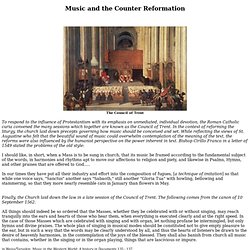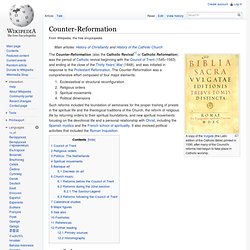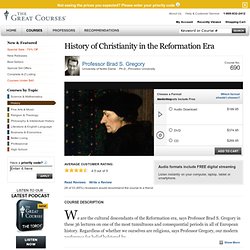

Music and the Counter Reformation. The Council of Trent To respond to the influence of Protestantism with its emphasis on unmediated, individual devotion, the Roman Catholic curia convened the many sessions which together are known as the Council of Trent.

In the context of reforming the liturgy, the church laid down precepts governing how music should be conceived and set. While reflecting the views of St. Augustine who felt that the beautiful sound of music could overwhelm contemplation of the meaning of the text, the reforms were also influenced by the humanist perspective on the power inherent in text. Bishop Cirillo Franco in a letter of 1549 stated the problems of the old style: I should like, in short, when a Mass is to be sung in church, that its music be framed according to the fundamental subject of the words, in harmonies and rhythms apt to move our affections to religion and piety, and likewise in Psalms, Hymns, and other praises that are offered to God.....
Index. Counter-Reformation - Church music. The Counter-Reformation (also Catholic Reformation) denotes the period of Catholic revival beginning with the Council of Trent (1545-1563) and ending at the close of the Thirty Years' War, 1648.

Church music Reforms before the Council of Trent The Council of Trent is believed to be the apex of the Counter-Reformation's influence on church music in the 16th century. However, the council's pronouncements on music were not the first attempt at reform. The Catholic Church had spoken out against a perceived abuse of music used in the mass before the Council of Trent ever convened to discuss music in 1562. Fueling the cry for reform from many ecclesial figures was the compositional technique popular in the 15th and 16th centuries of using musical material and even the accompanying texts from other compositions such as motets, madrigals, and chansons. Reforms during the 22nd session Canon 8.
The Savior-Legend Reforms following the Council of Trent Thirty Years' War: REDIRECT Thirty Years' War... Counter-Reformation. A copy of the Vulgate (the Latin edition of the Catholic Bible) printed in 1590, after many of the Council's reforms had begun to take place in Catholic worship.

The Counter-Reformation (also the Catholic Revival[1] or Catholic Reformation) was the period of Catholic revival beginning with the Council of Trent (1545–1563) and ending at the close of the Thirty Years' War (1648), and was initiated in response to the Protestant Reformation. The Counter-Reformation was a comprehensive effort composed of four major elements: Ecclesiastical or structural reconfigurationReligious ordersSpiritual movementsPolitical dimensions. Church music of the reformation period. History of Christianity in the Reformation Era. Doctrine is "a long-term legacy of the efforts to educate, to catechize, to indoctrinate, that began in a widespread way during the 16th century.

" Understanding the Martyrs But despite these ties, it still takes a major effort of historical imagination to enter the minds of those who were willing to suffer martyrdom or martyr others for what we would regard as minor doctrinal differences. This course is designed to take you inside the minds of those who supported the Reformation and those who resisted it. It treats the three broad religious traditions that endured or arose during these years: Protestant Reformation. Although the core motivation behind these changes was theological, many other factors played a part, including the rise of nationalism, the Western Schism which eroded people's faith in the Papacy, the corruption of the Curia, and the new learning of the Renaissance which questioned much traditional thought.

On a technological level the invention of the printing press proved extremely significant in that it provided the means for the rapid dissemination of new ideas. The Roman Catholic Church responded with a Counter-Reformation initiated by the Council of Trent and spearheaded by the new order of the Society of Jesus (Jesuits) specifically organized to counter the Protestant movement. In general, Northern Europe, with the exception of most of Ireland, turned Protestant. Southern Europe remained Roman Catholic, while Central Europe was a site of fierce conflict, escalating to full-scale war. Religious situation in Europe[edit] History and origins[edit] Earlier schisms[edit] Literacy[edit]